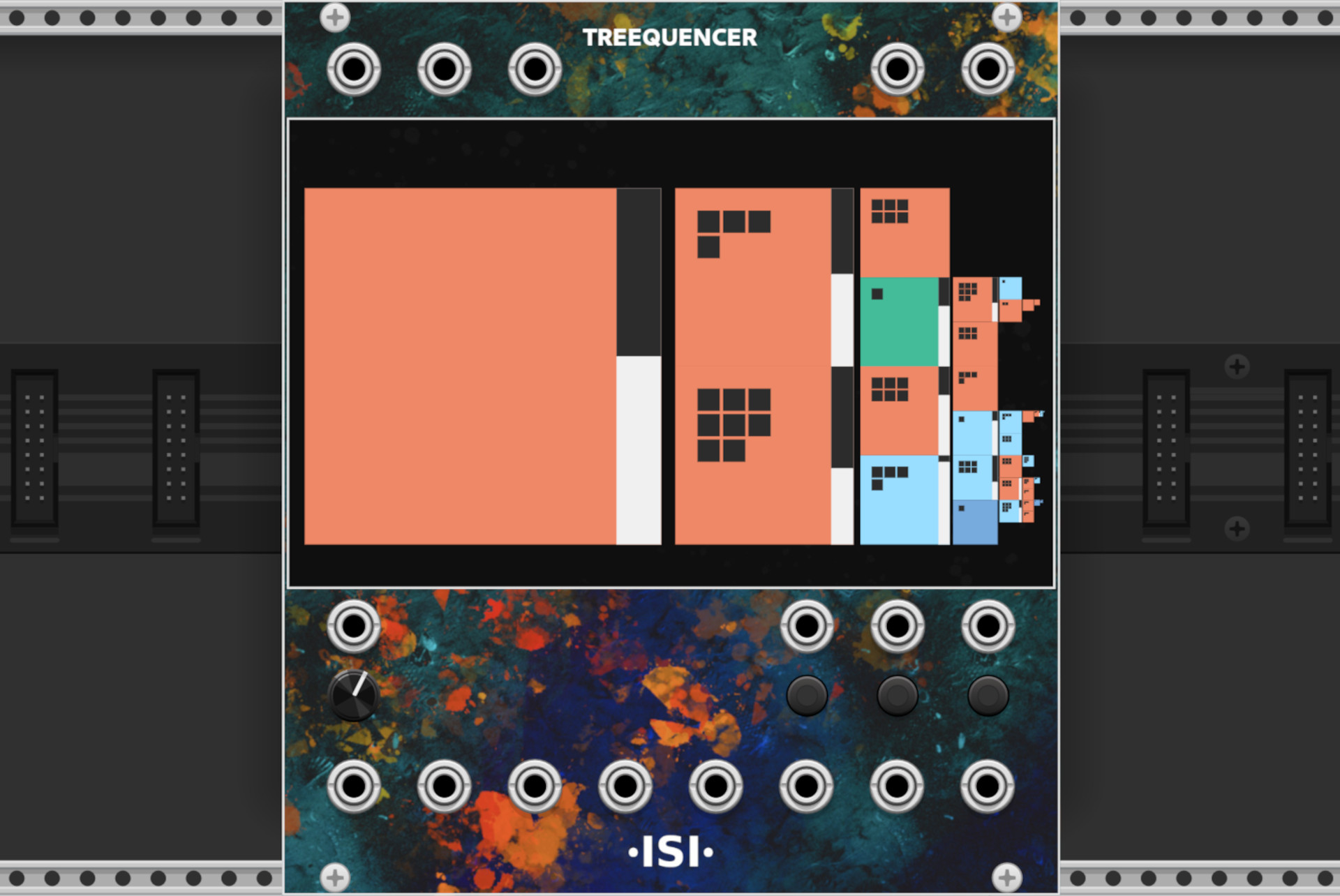Treequencer
Binary tree based sequencing.

Binary tree based sequencing.

Treequencer utilizes a binary tree algorithm for sequencing. Each tree node has a value and can have up to 2 children nodes. When the clock is triggered the next node will be randomly selected from the active nodes children. Traversing until there are no children left, then either resetting or begin going in the opposite direction.

You can zoom into the screen using your scroll wheel. Right click and drag to move around the view, Left clicking a node will open a context menu where you can set the node value, chance, and add children.

Node Output The whole number output value, values 1 to 8 output to the corresponding 1-8 outputs. Values higer than 8 will still output through the VOct out.
Node Chance Lets the chance for each child node to be randomly selected. 0.0 means no chance for child 1 to be selected and 1.0 means 100% chance.
Preview Sets the selected node to the active node and enables hold. This allows you to easily preview the node output.
Add Child Adds a child to this node, maximum 2 children.
Remove Removes the selected node and all attached to this node. (children and their children)
Generate Sequence Allows you to automatically generate an entire node structure and use a specific scale for selecting randomized output notes (Chromatic, Major, Minor, Pentatonic, Blues, Dorian, Mixolydian)

The modules context menu has a theme submenu where you can change the background to a solid white or black color if you are having trouble with the default background design.
You can change how Treequencer displays colors aswell. Treequencer utilizes Tol Color Schemes for better colorblind safe colors. There is also a greyscale color scheme :)
Knob and plug labels can be toggled via the toggle labels option in the context menu.
There are 3 ways you can represent the specified note for a node. You can set this via the Note Representation submenu in the modules context menu.
Squares the original method before I figured out text, uses up to 12 squares to represent the number.
Letters uses the VOct Out note letter representation (C#1, F2, etc..)
Numbers The raw output number value (1, 2, 3, etc...)
This is the scale the randomly selected output value a new child node will use. This can be changed in the modules context menu.